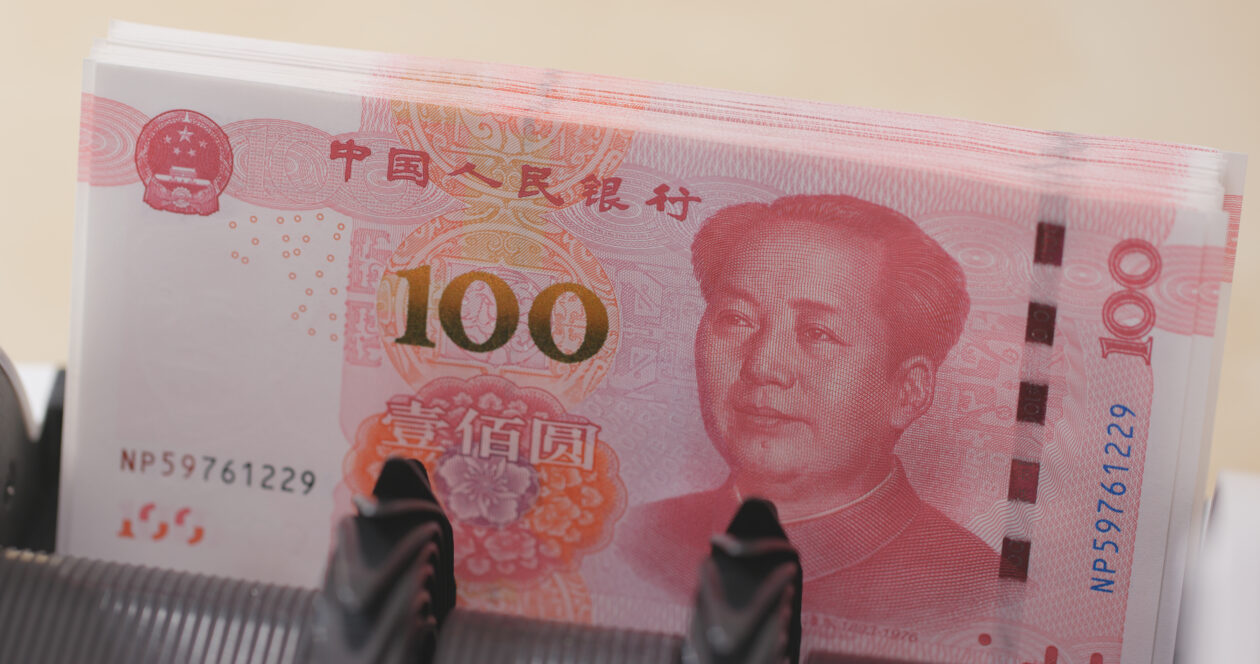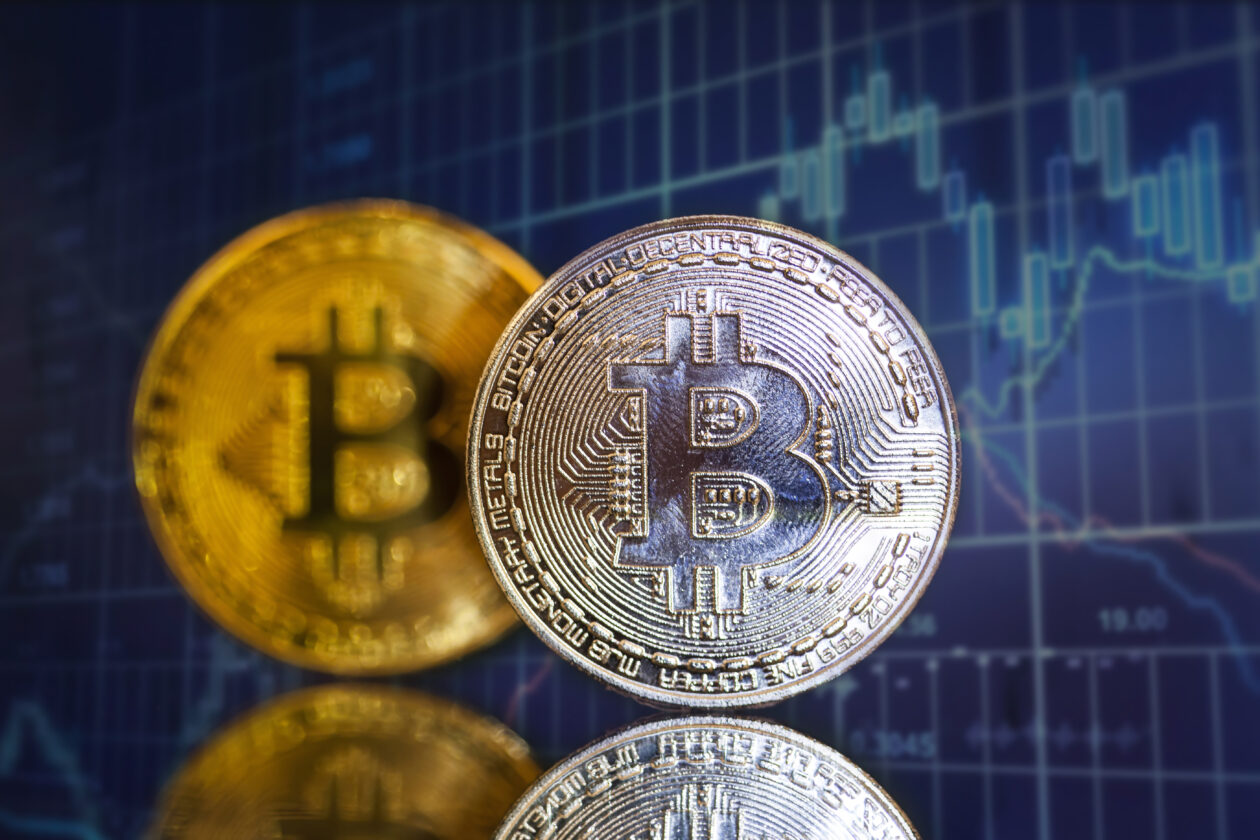Bitcoin edged up on Monday morning in Asia to trade slightly above the US$26,000 support level, after sliding over 10% for the week. Ether also moved higher but remained below US$1,700 following last week’s losses. Other top 10 non-stablecoin cryptocurrencies traded mixed. XRP led the winners, despite the U.S. Securities and Exchange Commission (SEC) moving to challenge a June court ruling in favor of Ripple Labs. Meanwhile, the Forkast 500 NFT index dropped as NFT marketplace OpenSea said it will stop enforcing creator royalties from August 31. U.S. stock futures traded flat after Wall Street logged weekly losses at close of trading Friday.
Baby steps upward for cryptos after painful few days
Bitcoin edged up 0.28% in the last 24 hours to US$26,178.36 as of 07:30 a.m. in Hong Kong, logging a weekly loss of 10.68%, according to CoinMarketCap data. The world’s leading cryptocurrency hit a two-month low of US$25,409.11 on Friday, but held position above the US$26,000 support level over the weekend.
A cool-off of Bitcoin exchange-traded fund (ETF) hype in the U.S. could be behind the retreat of the token. That’s the view of James Butterfill, head of research at European alternative asset manager CoinShares.
“The surge in June, spurred by BlackRock’s application for SEC approval of a Bitcoin ETF, led to a noticeable spike in prices,” said Butterfill in a report released Friday.
“However, markets are now coming to terms with the realization that an immediate SEC approval for a Bitcoin ETF in the U.S. is unlikely. It’s noteworthy that current Bitcoin prices have stabilized around levels observed before this announcement,” he added.
The low volume and volatility in Bitcoin, a rise in U.S. treasury yields, as well as concerns over China’s ailing economy contributed to Bitcoin’s sharp weekly decline, the CoinShares report found.
“The outlook for the markets in the forthcoming months presents a blend of opportunities and challenges. It’s anticipated that the U.S. Federal Reserve will refrain from hiking rates further in September,” Butterfill said.
A dovish shift in Fed policy could provide a boost to Bitcoin’s prospects, he added.
“On the flip side, investors are eagerly awaiting the SEC’s verdict on the Grayscale ETF and BlackRock applications in September. Anticipations are that decisions on both applications might be postponed, potentially leading to investor disappointment,” Butterfly said.
Along with Bitcoin, Ether moved up 0.85% to US$1,683.57 but remained 8.50% lower for the past seven days.
The U.S. SEC could approve several ETFs based on Ethereum futures by October 2023, Bloomberg reported on Friday citing unnamed sources. Investment firms Volatility Shares, Bitwise, Roundhill and ProShares have all applied for Ethereum ETF licenses.
Other top 10 non-stablecoin cryptocurrencies traded mixed over the past 24 hours, but all posted weekly losses. Cryptocurrencies have seen a total liquidation of US$24.91 million in the past 24 hours.
That’s a considerable decrease on the daily losses posted last week during a calamitous downturn in the crypto market. On Friday alone, traders liquidated over US$1 billion in cryptocurrencies, including US$851.94 million in long positions — positions where investors bet the cryptocurrency price will rise. On Monday, long position liquidations stood at US$6.89 million for the past 24 hours, according to data from crypto information platform CoinGlass.
Ripple’s XRP token led the winners, gaining 3.96% to US$0.5408 but plunged 13.76% for the week.
In the on-going legal battle between Ripple Labs and the SEC, Judge Analisa Torres on Thursday granted the SEC permission to appeal an earlier judgement in favor of Ripple Labs. That ruling in late June found that the technology firm’s programmatic sales of XRP did not violate securities laws.
In a Saturday tweet, Ripple’s Chief Technology Officer David Schwartz said the SEC should not be allowed to appeal until the conclusion of the case. He said that, even if an appeal is granted, “the case should still continue and the appeal should run in parallel.”
Ripple will have until September 1 to respond to the SEC’s appeal motion.
The total crypto market capitalization edged up 0.45% in the past 24 hours to US$1.06 trillion, while trading volume fell 13.09% to US$21.67 billion.
OpenSea NFT marketplace to stop enforcing creator royalties
The main Forkast 500 NFT index dropped 1.08% in the past 24 hours to 2,327.91 as of 10:20 a.m. in Hong Kong, and fell 5.94% for the week. Forkast’s Ethereum Polygon and Cardano NFT indexes also logged losses, while the index for Solana moved higher.
“The catalyst for this (NFT index drop) was OpenSea’s decision to get rid of royalties,” said Yehudah Petscher, NFT strategist at Forkast Labs, in a YouTube video uploaded Sunday.
OpenSea, one of the world’s largest NFT marketplaces, announced on Thursday it would stop enforcing creator royalty fees, making them optional. The change will take effect from August 31. The platform will continue to charge a 2.5% fee for every transaction.
“(The mandatory royalty fee on OpenSea) was meant to empower creators with greater control over their Web3 business models, but it required the buy-in of everyone in the Web3 ecosystem, and unfortunately that has not happened,” wrote OpenSea in the announcement.
OpenSea’s move received criticism from commentators. In a tweet Friday, Mark Cuban, owner of the Dallas Mavericks basketball team and an investor in OpenSea, described the decision as a “huge mistake” that would hurt the industry.
Yuga Labs, the creator of NFT collection Bored Ape Yacht Club (BAYC), responded to the news in a tweet Saturday saying it will gradually wind down its support for OpenSea. “Yuga believes in protecting creator royalties so creators are properly compensated for their work,” the company said.
“What I think will happen is they either reverse their decision, or Yuga Labs may end up launching their own NFT marketplace,” said Forkast Labs’ Petscher on Sunday. While the impact of the decision is only just being felt, he added, it will “change the landscape of NFTs.”
Total NFT trading volume gained 15.60% in the past 24 hours to US$14.76 million, according to data from CryptoSlam. Volumes on the Ethereum, Bitcoin, Solana and Polygon blockchains all logged increases, while Cardano’s volume dipped.
Among NFT collections, Ethereum-based BAYC saw the largest 24-hour sales volume, which rose 45.30% to US$2.02 million. Mythos Chain-based DMarket and Polygon-based DraftKings ranked as the second and third largest collections by 24-hour trading volume.
In terms of single NFT sales, BAYC #8585 sold at over US$255,000 on Sunday, making it the most expensive NFT traded in the past 24 hours. However, its former holder purchased the NFT at over US$1 million in October 2022.
“This seller took a huge loss on this NFT,” said Petscher. “That explains the rising average sale price but also the declining profits.”
China policy stimulus lacks punch

U.S. stock futures edged higher as of 11:20 a.m. in Hong Kong, after the three major U.S. indexes closed mixed on Friday and booked losses for the week.
In Asia, the main stock indexes traded mixed on Friday morning. China’s Shanghai Composite Index and Hong Kong’s Hang Seng logged losses, while South Korea’s Kospi and Japan’s Nikkei moved up.
In the U.S., investors await Federal Reserve Chair Jerome Powell’s opening speech at the Jackson Hole Economic Symposium on Friday. The Fed’s annual summit is attended by central bank leaders from across the world. Powell’s speech could provide insights into the Fed’s thinking on monetary policy.
“We view the event as a good opportunity for Powell to start laying the ground for the next step in the Fed’s policy guidance: no longer focused on how many hikes to expect, but rather on rates remaining ‘higher for longer,'” analysts at Canadian investment bank TD Securities said in a note viewed by Reuters.
In July, the Fed raised the interest rate to between 5.25% and 5.50% — the highest level since January 2001. Powell said in a statement following the decision that the U.S. central bank will “take a data-dependent approach” in determining its future monetary policies. It did not indicate if there are more hikes in the cards or how long the Fed would keep up its tightening cycle.
The Fed meets on Sep. 19 to make its next move on interest rates. Analysts at the CME FedWatch Tool predict a 11.5% chance for another 25-basis-point increase.
U.S. data to watch in the week ahead includes U.S. chipmaker Nvidia’s second-quarter earnings report, as well as S&P Global’s purchasing manager indexes (PMI). Both are set for release Wednesday.
Meanwhile in China, the country’s central bank cut its one-year loan prime rate (LPR) to 3.45% from 3.55% on Monday morning. However, it kept the five-year LPR unchanged at 4.2%, according to the state media Xinhua News Agency.
The stimulus measure was smaller than the analyst expectation of two 15-basis-point cuts to both the one-year and five-year rates. Commentators said China’s central bank may need to act more decisively to soothe growing fears of a recession.
“Until more forceful policy responses are made available to backstop the contagion risk, we believe Chinese stocks will settle in a lower trading range than we previously envisaged,” Goldman equity strategists wrote in a note viewed by Bloomberg.
(Updates with equities section.)





